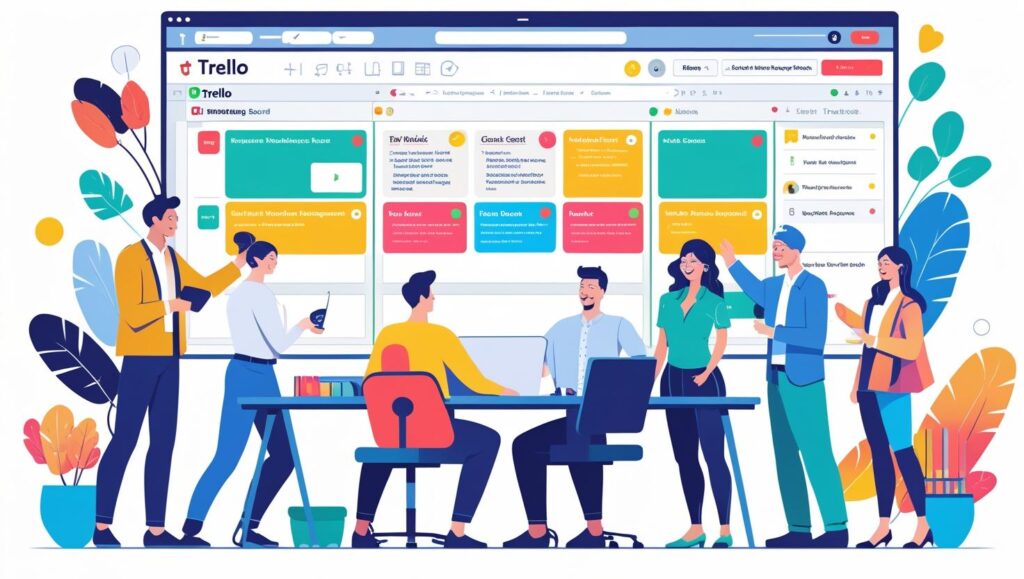Bottom Line Up Front: Stop undervaluing yourself
Your freelance pricing isn’t about what you think you’re worth—it’s about the value you deliver to clients. Master the three core pricing models (hourly, project-based, and value-based), research your market thoroughly, and price with confidence from day one. Remember: clients who only care about cheap rates aren’t the clients you want.
Setting your freelance rates feels like navigating a minefield blindfolded. Too high and you’ll scare away prospects. Too low and you’ll attract nightmare clients while barely covering your rent. But here’s the thing—pricing anxiety is keeping you broke, not protecting you from failure.
The freelance workforce is made up of 52.3% women and 47.7% men, showing a nearly even gender distribution. In 2024, 52% of Gen Z professionals took on freelance work. With freelance workers expected to account for 60% of the U.S. workforce by 2027 and freelancers in the U.S. earning an average of $47.71 per hour, there’s never been a better time to get your pricing strategy right.

The Three Pricing Models Every Freelancer Must Know
Understanding your pricing options is like having a GPS for your freelance journey—you need to know which route to take based on where you’re going.
Hourly Pricing: Your Training Wheels
Hourly pricing, or billing by the hour, is straightforward: you sell your time for money. For every hour that you work on a project, you get paid a fixed amount. Most beginners start here because it feels safe and predictable.
When hourly pricing works:
- You’re building experience and learning how long tasks actually take
- Projects have unclear scope or frequent changes
- Client needs ongoing support or consultation
- You’re working on tasks like virtual assistance or customer service
The hourly trap: Hourly rates are the freelance industry relic that just won’t go away. Simply put, creative work is valuable, and that value has almost no relation to the time it takes to product creative work. The faster you get at your job, the less money you make—which is completely backwards.
Pro tip: Use hourly billing as your market research phase. Track everything meticulously to understand your work patterns, then transition to project-based pricing once you have solid data.

“Use hourly billing as your market research phase. Track everything meticulously to understand your work patterns, then transition to project-based pricing once you have solid data”.
– FreelanceLaunchpad.com
Project-Based Pricing: Where Most Freelancers Thrive
Project pricing shifts the conversation from “how long will this take?” to “what will this accomplish?” Project pricing often leads to increased profits and more control over your business. As you get more efficient with your craft, you will likely want to pivot away from hourly pricing. Project pricing rewards efficiency.
When project pricing makes sense:
- The scope is clearly defined with specific deliverables
- You’re experienced enough to estimate accurately
- The client cares more about results than time tracking
- You want to scale your income without working more hours
Real-world sample: I ended up selling the project for $4,250. The website took me roughly 5 hours to build. And this is the thing: the client walked away happy. They loved their new website. This freelancer made $850 per hour by focusing on value, not time.

The biggest mistake new freelancers make: Whether you’re unsure how to value your work as a beginner or struggling from impostor syndrome, undervaluing your work is number one on this list for a reason: it’s an all-too-common mistake.
Value-Based Pricing: The Holy Grail
Value pricing is based on the perceived value that a project brings to the client. It is similar to project-based pricing, except that it takes into consideration the expected delivered value. This is where experienced freelancers make serious money.
When to use value-based pricing:
- You have proven expertise and a strong portfolio
- You can quantify the business impact of your work
- The client has a significant budget and clear ROI expectations
- Your work directly affects revenue, efficiency, or cost savings
Value pricing in action: A non-profit organization needs to get more students to attend paid events each year. Each student is worth $300 (the price of one event ticket). Your goal is to help them get 100 additional students to attend events next year, which is worth $30,000 of new revenue to the organization. To achieve this goal, you’ll charge the client 20% of the first year of realized revenue, or $6,000.
You know you’re priced right when your customers complain—but buy anyway
John Harrison



Research Your Market Like Your Business Depends on It (Because It Does)
The biggest mistake new freelancers make: Whether you’re unsure how to value your work as a beginner or struggling from impostor syndrome, undervaluing your work is number one on this list for a reason: it’s an all-too-common mistake.
Know Your Competition
Before you affix yourself with a price, consider researching what your competition is charging, specifically, your direct competition. These are the freelancers who work in the same industry as you, have similar experience and are applying for the same projects you are.
Where to research rates:
- Platform profiles on Upwork, Fiverr, and Freelancer.com
- Industry salary surveys from sites like Glassdoor and PayScale
- From a comprehensive dataset encompassing 62,000+ bookings, applications and approvals, spanning various disciplines, experience levels and contract lengths, the 2024 average day rate stood at £390, reflecting a +3% year-on-year increase. The hourly rate sat on average at £49 per hour.
- Professional association reports and surveys
- Direct conversations with other freelancers (most are surprisingly helpful)
Current Market Reality Check
The freelance market is more competitive but also more lucrative than ever. The highest paying freelance skills of today are direct response copywriting, ad management, SEO consulting, software development, lead generation, and sales. Freelancer earning potential for specialized roles is much higher than a general role – software developers can earn up to $1,000 USD/hr.
31% of freelancers earn $75,000 a year, so it is not an ideal plan to side hustle! This isn’t pocket change territory—it’s serious career money.
The Psychology of Pricing: What Clients Really Think
Understanding how clients evaluate price helps you position yourself strategically. The truth of the matter is, most of us have no clue what we’re doing when it comes to evaluating price. This works in your favor if you understand the psychology.
Quality Signals
New research from Stanford University reveals some pretty conclusive evidence that asking people to compare prices is not the right choice for businesses that rely on quality over quantity (read: all successful freelancers). When you compete on price, you’re telling clients that’s all you have to offer.
Not Even Started as a Freelancer Yet?
Freelancer Mindset: 5 Questions to Ask Yourself Before Going Solo – Freelance Launchpad
What high-paying clients look for:
- Professional presentation and communication
- Clear processes and systems
- Portfolio of successful results
- Confidence in pricing discussions
- Expertise in their specific industry or challenge
The Discount Trap
This also happens when new freelancers want to get a lot of experience. They set a low rate to make themselves more attractive. Don’t do this. This invites all the bad clients in along with crooks and frauds. Good clients may like your work, but they won’t get to see it because they are searching in a much higher price range – looking for quality.
Cheap prices attract cheap clients. It’s that simple.
Setting Your First Rate: A Step-by-Step Formula
Step 1: Calculate Your Baseline Hourly Need
Start with your financial reality:
- Monthly expenses: Rent, food, insurance, taxes, business costs
- Desired profit margin: At least 20-30% above expenses
- Working hours: Realistically, 20-30 billable hours per week
- Vacation and sick time: Factor in 2-4 weeks off per year
Example calculation:
- Monthly needs: $4,000
- Annual needs: $48,000
- Add 30% for taxes and savings: $62,400
- Billable hours per year (25 hrs/week × 48 weeks): 1,200 hours
- Minimum hourly rate: $52
Step 2: Research Your Market Range
To find this information, do some research and look at your competitors’ rates. On Upwork or sites like Glassdoor, you can get an idea of freelancers’ hourly rates. Create a spreadsheet with:
- Low-end rates in your field
- Mid-range rates for your experience level
- High-end rates for experts
- Average project costs for similar work
Step 3: Position Yourself Strategically
If you’re brand new: Start at the low-mid range, but not the bottom. I would discount my rates for clients where I saw a lot of potential for growth for myself or learning opportunities. I would’ve scaled as fast as I did if I hadn’t kept my rates low and prioritized learning in my first phase.
If you have relevant experience: Price in the middle range confidently. Your skills transfer even if freelancing is new.
If you’re transitioning from employment: You should know your value to make sure you’re charging a reasonable price for your services. Anchor your price point based on the value you provide to the client.
Common Pricing Mistakes That Keep Freelancers Broke
Mistake #1: Letting Clients Set Your Rates
There are a lot of good methods for coming up with freelance rates—asking your clients what they want to pay isn’t one of them. Letting clients dictate what you charge is one of the biggest mistakes a freelancer can make.
Instead: Present your rates confidently and be willing to walk away from clients who can’t meet them.
Mistake #2: Never Raising Rates
Regardless of how you price or where your rates fall on the scale of your niche, maintaining the same rates year after year is a huge mistake. It caps your income and—thanks to inflation—can mean you actually end up making less money each year.
The fix: Review and adjust rates every 6-12 months based on experience, market changes, and demand for your services.
Mistake #3: Underestimating Project Scope
You’re not factoring in the time you already spent researching an idea before it was approved in your quote of how much to charge for 500 word article. Many freelancers only count “hands-on-keyboard” time and forget about:
- Initial research and discovery
- Revisions and feedback cycles
- Project management and communication
- Administrative tasks
Mistake #4: Competing on Price Alone
Under-pricing, on the other hand, is a bit difficult to gauge. You’ll very rarely be told by your client that your freelance rates are too low or that you’re under-pricing yourself. They run a business and part of that is trying to get the best deals possible.
Focus on value, not cost. Show clients what they get for their investment.

Advanced Pricing Strategies for Growth
The Retainer Model
Retainers require accurate timekeeping and reporting. You’ll need some type of timesheet software. Look for opportunities to expand the scope, and therefore the amount of the retainer.
Retainers provide predictable income and deeper client relationships. They work best when:
- Clients need ongoing support
- You provide multiple related services
- The relationship has proven successful
- Both parties want long-term commitment
Package Pricing
Create service packages that bundle complementary offerings:
- “Website Design Package”: Design, development, and basic SEO setup
- “Content Marketing Bundle”: Blog posts, social media content, and email newsletters
- “Brand Identity Package”: Logo, brand guidelines, and marketing materials
Dynamic Pricing Based on Demand
As you get busier, raise your rates. The study revealed that the average day rate of UK freelancers increased from Q2 to Q3 2024, from £457 to £576. The same study revealed that the freelancers surveyed expected their day rates to further increase 12.2 per cent in the next year.
When you’re booked solid, it’s time to increase prices for new clients.
Presenting Your Rates with Confidence
Script for Rate Discussions
Client: “What’s your hourly rate?” You: “I don’t typically work hourly. Let me understand your project goals and I’ll provide a fixed price that gives you exactly what you need.”
Client: “Can you do it for [lower amount]?” You: “I understand budget is a consideration. Based on the scope we discussed, my rate reflects the value and expertise required. If the budget is firm, we could look at adjusting the scope to fit.”
Rate Increase Scripts for Existing Clients
Firstly, they need to know that the new rate makes sense to you and that you need to increase the rate as a good business practice. For instance, you’ve hired an assistant to take on some tasks or do research, which means a faster turnaround time which can lead to more sales for your customer.
Email template: “Hi [Client],
I wanted to give you advance notice that my rates will be increasing to $X starting [date]. This reflects my growing expertise and allows me to continue delivering the high-quality work you expect.
Your current project will complete at our existing rate, and I’m excited to continue our successful partnership at the new rate for future projects.
Let me know if you have any questions!”
The Long-Term Pricing Strategy
Year One: Foundation Building
- Use competitive research to set initial rates
- Track time meticulously to understand your work patterns
- Focus on building portfolio and testimonials
- Be open to slightly lower rates for high-value learning opportunities
Year Two: Confidence Building
- Raise rates by 15-25% based on experience gained
- Transition from hourly to project-based pricing when possible
- Start specializing in specific niches or industries
- Build recurring revenue through retainers
Year Three and Beyond: Market Leadership
- Position yourself as an expert with premium pricing
- Implement value-based pricing for appropriate projects
- Create productized services and packages
- Mentor other freelancers (and charge for it)
The Pricing Mindset Shift
The biggest barrier to pricing correctly isn’t market research or competition—it’s your own mindset. Clients don’t care if it takes you 20 minutes or 20 hours to complete the project. They care about results.
Stop thinking about what you’re “worth” and start thinking about what problems you solve. A $5,000 website that generates $50,000 in new business is an incredible bargain. A $50 logo that looks amateur could cost the client hundreds of thousands in lost credibility.
Your pricing confidence comes from:
- Knowing your market inside and out
- Understanding the real value you provide
- Having systems and processes that deliver consistent results
- Building relationships with clients who appreciate quality
Taking Action: Your Next Steps
- Research thoroughly: Spend a full day researching rates in your field
- Calculate your baseline: Know your minimum viable rate
- Set your initial rates: Price confidently from day one
- Track everything: Monitor time, costs, and profitability
- Review regularly: Adjust rates every 6-12 months
- Focus on value: Always lead with benefits, not features
Remember: When you develop yourself, your value increases and your rates follow; they will scale much faster than if you focus too much on money in the beginning.
Pricing isn’t just about money—it’s about positioning yourself for long-term success. The clients who value your expertise enough to pay fair rates are the same clients who’ll respect your time, provide clear feedback, and become long-term partners.
Stop apologizing for your rates. Start charging what you’re worth. Your future self will thank you.
Ready to level up your freelance business? Bookmark this guide and revisit it every few months as your experience grows. Your rates should evolve as quickly as your skills do.
Your First Steps to Freelance Freedom
PS: If you would like to see a simple calculator that you can use to help you get started with understanding rates for hourly, project and retainer etc, then hop over to our Tools Page for some help to get you started. Remember though, use this article for reference and not just the calculator as a stand alone!
